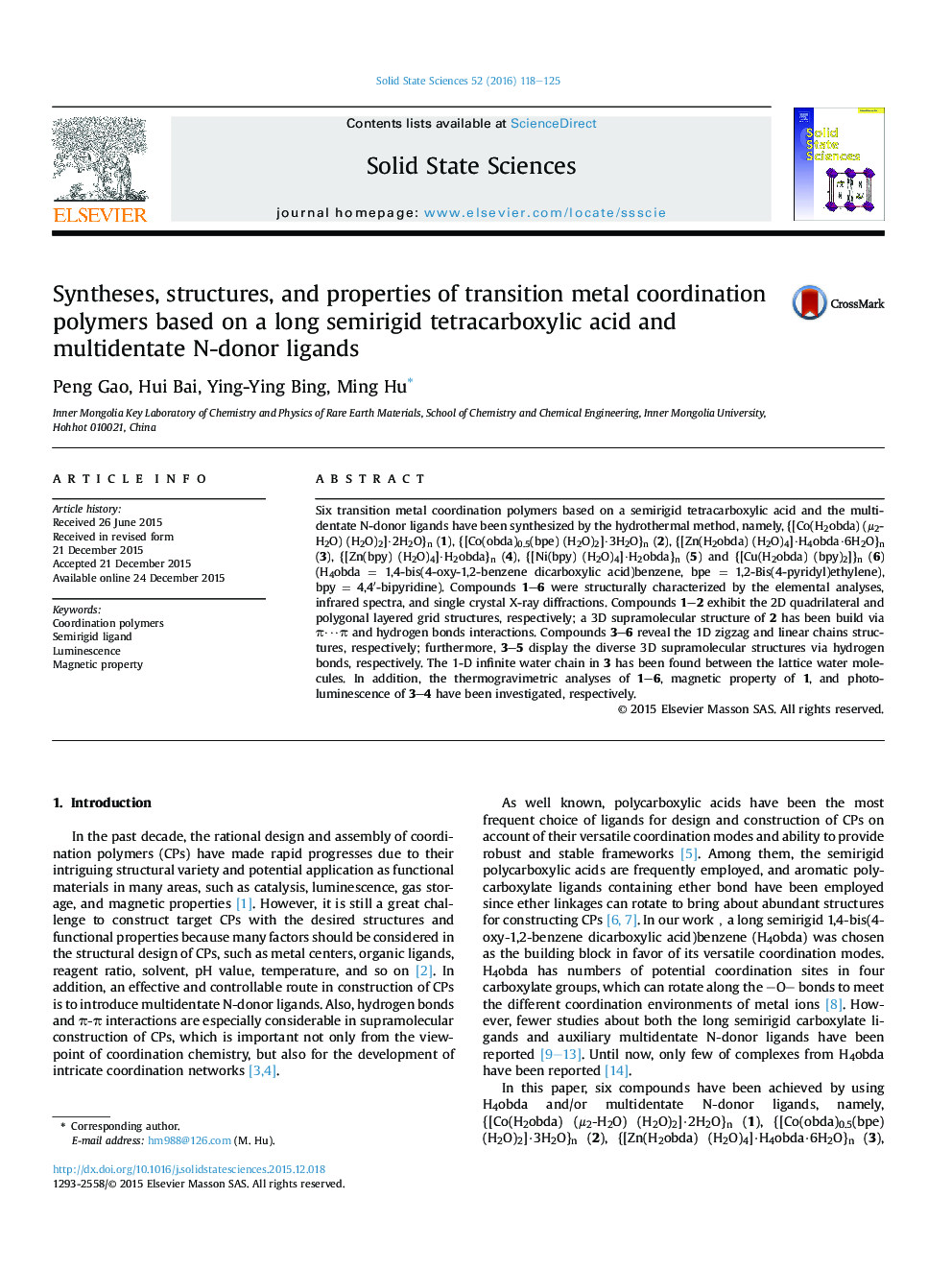| Article ID | Journal | Published Year | Pages | File Type |
|---|---|---|---|---|
| 1504046 | Solid State Sciences | 2016 | 8 Pages |
•Six coordination polymers display the diverse structures.•A 1-D infinite water chain exists in compound 3.•The magnetism and photoluminescence of some complexes were investigated.
Six transition metal coordination polymers based on a semirigid tetracarboxylic acid and the multidentate N-donor ligands have been synthesized by the hydrothermal method, namely, {[Co(H2obda) (μ2-H2O) (H2O)2]·2H2O}n (1), {[Co(obda)0.5(bpe) (H2O)2]·3H2O}n (2), {[Zn(H2obda) (H2O)4]·H4obda·6H2O}n (3), {[Zn(bpy) (H2O)4]·H2obda}n (4), {[Ni(bpy) (H2O)4]·H2obda}n (5) and {[Cu(H2obda) (bpy)2]}n (6) (H4obda = 1,4-bis(4-oxy-1,2-benzene dicarboxylic acid)benzene, bpe = 1,2-Bis(4-pyridyl)ethylene), bpy = 4,4′-bipyridine). Compounds 1–6 were structurally characterized by the elemental analyses, infrared spectra, and single crystal X-ray diffractions. Compounds 1–2 exhibit the 2D quadrilateral and polygonal layered grid structures, respectively; a 3D supramolecular structure of 2 has been build via π···π and hydrogen bonds interactions. Compounds 3–6 reveal the 1D zigzag and linear chains structures, respectively; furthermore, 3–5 display the diverse 3D supramolecular structures via hydrogen bonds, respectively. The 1-D infinite water chain in 3 has been found between the lattice water molecules. In addition, the thermogravimetric analyses of 1–6, magnetic property of 1, and photoluminescence of 3–4 have been investigated, respectively.
Graphical abstractFigure optionsDownload full-size imageDownload as PowerPoint slide
